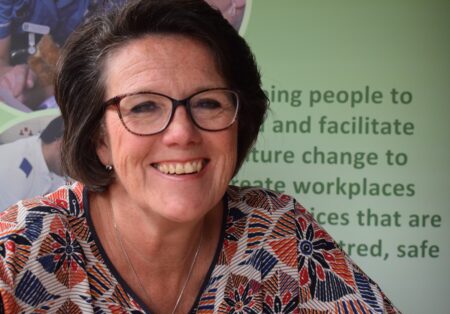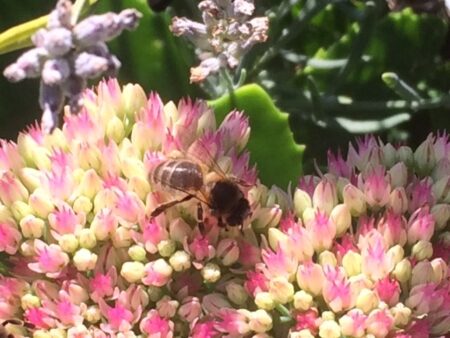Home News & Views What can we learn from honey bees?
What can we learn from honey bees?
Jo Odell, FoNS Practice Development Facilitator

Two weeks ago, I attended the Enhancing Practice Conference 2018 in Basel, Switzerland along with colleagues from FoNS, to share some of the work we are involved with. While I was there I was fascinated by a keynote speech given by Professor Thomas D Seeley from Cornell University. For over 40 years Professor Seeley has been studying the behaviour of honey bees and from his research he believes there are lessons for us all in terms of decision making and effective working. He has described all of this work in his most recent book; ‘Honeybee Democracy’ (Thomas D. Seeley, Princeton University Press, 2010).
 During the presentation Professor Seeley described how, through his research, he had discovered the importance of the scout bee, whose sole role is to find a new home for the bee swarm to live in. This is a life and death decision as the swarm will not survive if the new home they choose does not provide the right shelter. Each scout bee is genetically programmed to search for the right new home and then communicate this back to the other scout bees by undertaking a ‘waggle dance’ that indicates the distance, direction and quality of the new home. Over a period of 3-4 days the scout bees visit various locations and return and do the ‘waggle dance’ to show the other scout bees their preferred option. On the basis of this, the other scout bees then go and visit the most likely sites and eventually, a decision is made, the swarm moves to the new location and Professor Seeley discovered that 4 times out of 5, the bees chose the best location available. He also discovered that the queen bee plays no role in the decision-making process. The key feature in the decision-making process appeared to be the strength of the dancing, the better the potential new home, the more vigorous the dancing and this enables the bees to reach a decision. Importantly each scout bee visits the site proposed by the most vigorous dancer to then make a decision for themselves. From this Professor Seeley has developed 5 effective habits that he has used effectively when working with people and decision making. Here’s a link to an article or watch this video.
During the presentation Professor Seeley described how, through his research, he had discovered the importance of the scout bee, whose sole role is to find a new home for the bee swarm to live in. This is a life and death decision as the swarm will not survive if the new home they choose does not provide the right shelter. Each scout bee is genetically programmed to search for the right new home and then communicate this back to the other scout bees by undertaking a ‘waggle dance’ that indicates the distance, direction and quality of the new home. Over a period of 3-4 days the scout bees visit various locations and return and do the ‘waggle dance’ to show the other scout bees their preferred option. On the basis of this, the other scout bees then go and visit the most likely sites and eventually, a decision is made, the swarm moves to the new location and Professor Seeley discovered that 4 times out of 5, the bees chose the best location available. He also discovered that the queen bee plays no role in the decision-making process. The key feature in the decision-making process appeared to be the strength of the dancing, the better the potential new home, the more vigorous the dancing and this enables the bees to reach a decision. Importantly each scout bee visits the site proposed by the most vigorous dancer to then make a decision for themselves. From this Professor Seeley has developed 5 effective habits that he has used effectively when working with people and decision making. Here’s a link to an article or watch this video.
The presentation was fascinating and I took away a number of key messages. Firstly, a leader should be a facilitator or enabler of the decision-making process; all should be working towards a common goal and everybody encouraged to offer solutions, such a scenario will encourage diverse and creative suggestions. Secondly, a facilitating, enabling leader can create space where there is open dialogue and discussion to help people form their own and collective decisions. Lastly, sharing positivity and enthusiasm can encourage our colleagues; so often we focus on problems and fixing them.
Comments are closed.

